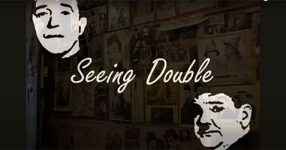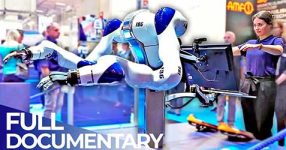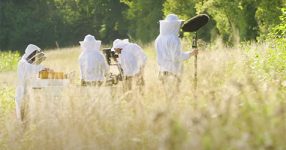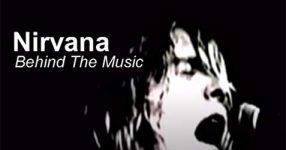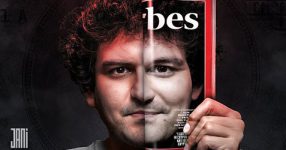“Dune (Denis Villeneuve) Making of & Behind the Scenes” provides a glimpse into the meticulous process of bringing Frank Herbert’s vision to life in Denis Villeneuve’s adaptation of “Dune.” The director emphasizes the luxury of having a clear vision and not solely relying on imagination. Sets are designed with the aim of respecting the spirit of Herbert’s book, requiring extensive planning and attention to detail. The expansiveness of the sets provides a unique backdrop for the actors, allowing them to seamlessly embody their characters.
The collaborative effort between the director and the production team is evident, with the script serving as a catalyst for the creation of mood boards, references, and sketches. The goal is to deliver a movie with a distinctiveness that sets it apart from previous adaptations. Building physical sets becomes crucial, influencing not only the actors’ performances but also the director’s approach to reality. The documentary highlights the dynamic nature of ideas emerging onset, shaped by the interplay of light and the authenticity of real environments.
Diverse Environments and Cultural Influences
Denis Villeneuve delves into the diverse landscapes of Arrakis, from the cozy Kaladan to the harsh and desolate Arus. Each environment is meticulously crafted to convey a distinct atmosphere. The documentary showcases the attention to detail in designing Paul’s bedroom as a work in progress, emphasizing the importance of creating a sense of vulnerability and tension within the space.
The contrast between Kaladan and Arrakis extends beyond visual elements to architectural styles. The focus on architectural choices, such as thick walls and large spaces to combat sandstorms on Arus, exemplifies the dedication to portraying a believable and immersive world. The inclusion of murals depicting the Sandworm, a significant element in the Dune universe, adds layers to the cultural and artistic aspects of the planet.
Crafting Characters and The Artistic Process
The documentary explores the intricate process of character design, makeup, and costuming, particularly focusing on iconic figures like Baron Harkonnen and the Bene Gesserit. Discussions with the makeup artist, Patrice Vermet, reveal the creative challenges in transforming actors into their characters, emphasizing the importance of avoiding caricature and instead capturing strength and power.
The costume design is lauded for its regality and the transformative effect it has on the actors. The stillsuit, a vital element for survival on Arrakis, is presented as a heavy-duty piece that not only serves its purpose but also adds a distinctive aesthetic to the film. The inclusion of sound design to enhance the otherworldly aspects, like the unique voice used by characters, showcases the commitment to creating a realistic yet fantastical universe.
Creature Design and Technological Marvels
The documentary sheds light on the intricacies of designing and animating creatures like the Sandworm and the ornithopter. Collaborating with artists like Coy Wartz and utilizing CGI, the team brings these fantastical elements to life. The emphasis is on creating realistic movements and emotions for the Sandworm, making it a crucial element in conveying the epic scale of Dune.
The transformation of actors into their characters, such as Stellan Skarsgård embodying Baron Harkonnen, is explored. The process is not only technical but also involves the actor’s commitment to their roles. The documentary captures the mesmerizing transformation and the eerie presence of Baron Harkonnen, creating a character that is both frightening and captivating.
Musical Score and Immersive Sound
Hans Zimmer’s involvement in crafting the musical score for Dune is highlighted, showcasing the challenges and excitement of working on a project of such magnitude. The documentary emphasizes how the score contributes to the emotional depth of the film, enhancing the viewer’s experience in unique ways. The dedication to creating a realistic soundscape, from the sandworm roars to the atmospheric elements, reflects the commitment to immersing the audience in the world of Dune.
The use of sound extends to the Voice, a significant aspect of the Dune universe. The challenges in making it sound natural and not like a synthesized effect are explored, emphasizing the desire to create an authentic auditory experience. The collaboration between sound designers and the director is evident in their pursuit of realism, even when dealing with fictional elements.
Characters and Relationships
The documentary delves into the characters and their relationships, highlighting the complexity of roles like Paul, Gurney, Duncan, and Jessica. The actors discuss their characters’ motivations, relationships, and the challenges of portraying multifaceted personalities. Denis Villeneuve’s approach to balancing character-driven narratives within the grand scale of Dune is commended, showcasing a story that intertwines individual relationships with overarching conflicts.
The inclusion of key characters, like Stilgar and Chani, brings depth to the narrative. The complexities of alliances and conflicts between different houses, such as the Harkonnens and the Atreides, add layers to the storytelling. The documentary hints at the emotional and physical challenges faced by characters as they navigate a world rife with political intrigue, familial obligations, and personal ambitions.
Fremen, Bene Gesserit, and the World of Dune
The documentary explores the various factions within the Dune universe, focusing on the Fremen and the Bene Gesserit. It delves into the unique skills, beliefs, and societal structures that define these groups. The Fremen’s adaptation to the harsh environment of Arrakis and their reverence for water is highlighted, showcasing the intricate details that contribute to their portrayal as a resilient and resourceful community.
The Bene Gesserit, portrayed as a Sisterhood with a wide range of expertise, is discussed in terms of their political and spiritual significance. The unique abilities of the Bene Gesserit, including the Weirding Way and the Voice, add depth to their portrayal. The documentary emphasizes the attention to detail in crafting these factions, ensuring that they are not only visually distinct but also integral to the fabric of the Dune universe.
Combat Techniques and World-Building
The documentary provides insights into the combat techniques used in Dune, specifically focusing on the intricate choreography of close combat scenes. Drawing inspiration from Kali and specific styles of combat, the combat sequences are designed to be fast-paced, precise, and unique to the world of Dune. The attention to detail in adapting the combat styles to different characters is highlighted, showcasing a level of mastery achieved by both actors and stunt performers.
The world-building extends to the various technological marvels present in Dune, such as the ornithopters and the sandworms. The challenges of animating these elements and integrating them seamlessly into the narrative are discussed, showcasing the collaborative efforts between the director, animators, and artists. The documentary underlines the importance of creating a believable yet fantastical world that captivates the audience’s imagination.
In conclusion, the documentary “Dune (Denis Villeneuve) Making of & Behind the Scenes” offers a comprehensive behind-the-scenes look at the intricate and collaborative process of bringing Frank Herbert’s epic vision to the big screen. From set design to character transformation, creature animation to musical score, the documentary provides a detailed exploration of the creative decisions and technical challenges faced by the filmmakers. It offers a deeper appreciation for the dedication and artistry that goes into crafting a cinematic masterpiece like “Dune.”


